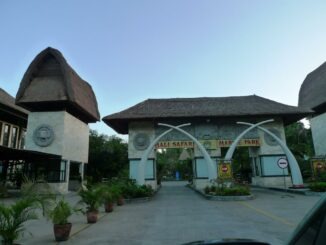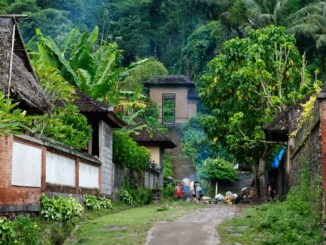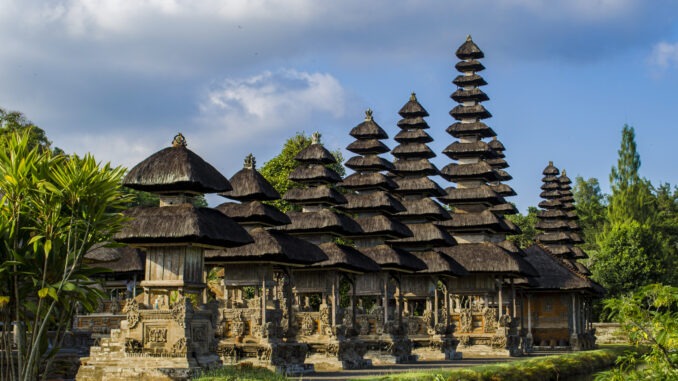
Table of Content:
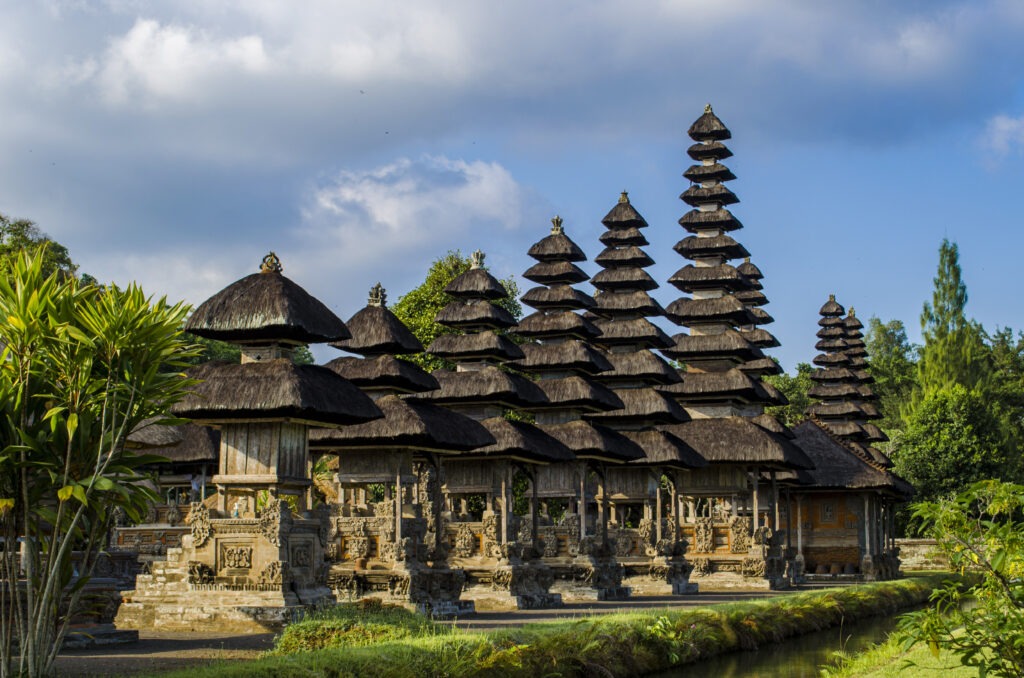
Fascination Pura Taman Ayun Temple
On a river island just thirty kilometers from the island’s capital, Denpasar, lies the temple complex of Pura Taman Ayun. It is the second holiest temple in Bali. This makes it one of the most important and at the same time most beautiful temples.
In the village of Mengwi rises the eleven-story temple complex, surrounded by a canal overgrown with water lilies and rare species of plants that exist in Bali. This also gives rise to the name Pura Taman Ayun, which translated means “Temple of the Floating Garden”. All buildings in the courtyard are decorated with lush carvings.
There is much to see around Pura Taman Ayun
The interior, the central temple complex, is reserved exclusively for devout Hindus. The inner courtyard and the atria characterize the connections of gods to humans and earth spirits. Other visitors are allowed to walk around the site, which is protected by a chest-high wall, on a paved and specially designated path.
It is strictly forbidden to climb the wall to possibly take pictures or sit on it. Yellow and pink frangipani trees bloom in the spacious park, in the center of which is the Pura Taman Ayun temple. Mangoes and durian trees provide shade and complement the spectacular play of colors. Picnicking is allowed in the meadows and is popular with both Balinese people and tourists.
Dance performances and gamelan orchestra
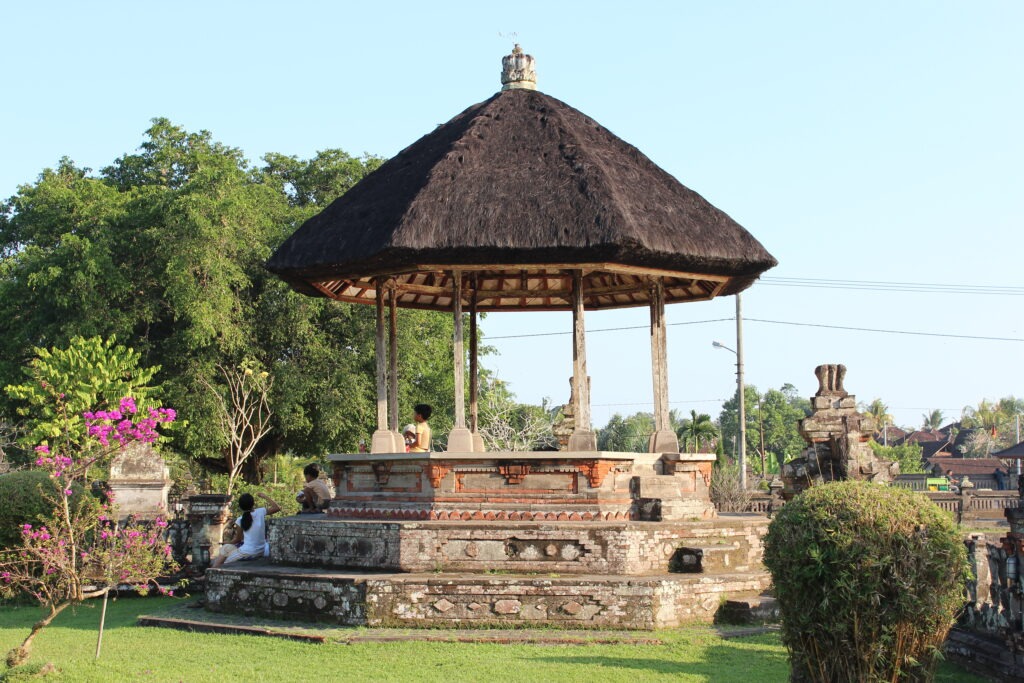
A walkway leads from the meadow areas to an open hall where Balinese dance performances take place and there is space for a gamelan orchestra. What is unusual about the Taman Ayun temple is its architectural design. It is terraced and faces the Gunug Batukan. All other Balinese temples are aligned with the sacred mountain Gunung Agung.
Next to the entrance to the temple complex are two open halls. In one, figures re-enact a ritual cockfight. The other hall is dedicated to the rice goddess Dewi Sri. It is reproduced there as a figure two meters high. Her dress, crown and jewelry are formed from painted rice grains.
Here is what to keep in mind when visiting a temple complex
Temple complexes and especially the temple Pura Taman Ayun are sacred places. There are certain rules in the dress code. Knees and ankles should be covered. It is equally undesirable to show bare shoulders. A sarong or large cloth shows reverence for the culture of Bali and its people.
Photography is allowed, but photos should not be taken right next to people of faith or directly of people praying. Offerings are often placed on the ground. Care must be taken not to step over the “Canang Sari”. The facility can be entered only through a single entrance.
The history of Pura Taman Ayun temple
Historians do not agree on the year of construction and the builder. Some sources report that the temple was built in 1634 by I Gusti Ngurah Agung Shakti, the first king of Mengwi Kingdom. Other sources consider the 18th century likely as the year of the temple’s founding as a state stamp.
Since 2012, Tama Pura Ayun has been a UNESCO World Heritage Site. The basic idea of the temple is that it should reflect the Hindu cosmos. The eleven-story pagoda towers are symbolic of Mount Mahameru, which is considered the dwelling place of the gods and the place for the souls of the dead. The special feature of this temple is its architectural orientation: normally all shrines of Balinese temples are oriented towards the sacred mountain Gunung Agung, Taman Ayun, however, is oriented towards Gunung Batukan.
Architecture and layout of the Pura Taman Ayun temple
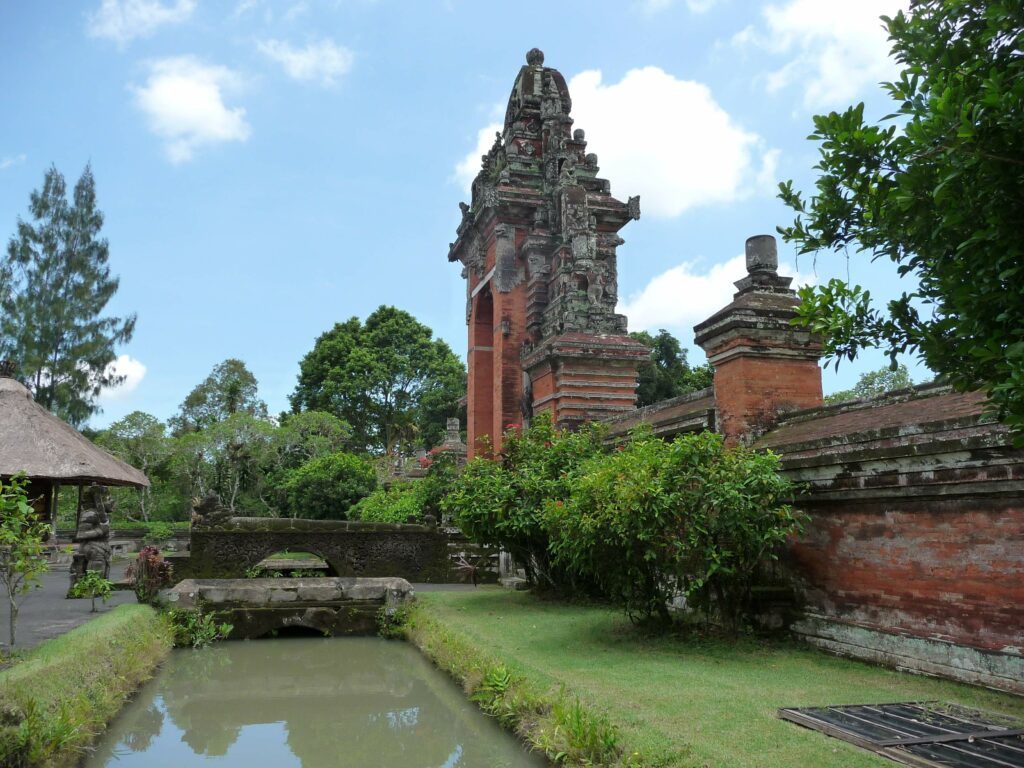
The temple complex consists of twenty-seven individual structures. On a rectangular area are built several pagodas(Meru)which are seven, nine and eleven stories high. In them are kept the shrines of the gods. On the one hand, the Hindu deities Shiva, Vishnu and Brahma are worshipped. On the other hand, the worship also applies to the gods of the volcanoes Batur, Agung and Batukan. In honor of the ruling families of Mengwi, there are also some ancestral shrines in the temple of Pura Taman Ayun.
Traditional features of Balinese architecture
The entire complex is designed according to traditional features of Balinese architecture. The extensive parks, the various lotus ponds , the fish ponds and the enclosures correspond to this. According to Balinese belief, the moat that runs around the temple complex is used by the sky nymphs, the Widabari, for bathing. According to the ideas, they are the mediators between the gods and the people.
The pools have grown moss and algae over the years, but this definitely adds to the rustic charm of the entire facility and the scenery. North of the bell tower hides a small pavilion, Bale Loji.
In earlier years, priests and their attendants prepared for ceremonies and celebrations here. Or they simply took a break for once. In the meantime, various artists have discovered this refuge for themselves and also offer their works for sale here.

